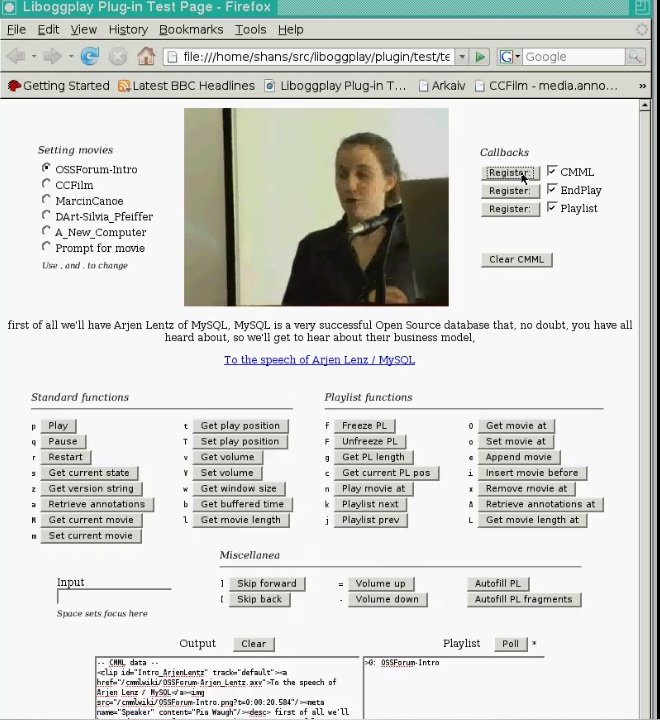Many people wonder what the future of video on the Web should be and want a more integrated and simpler video solution than what flash provides right now.
The W3C and WHATWG’s move towards a video element in HTML5 is a good first step.
However, it is not enough.
At the recent W3C’s video workshop, I realised that people’s requirements and expectations go far beyond what the HTML5 spec is currently providing. And most of those requirements can be satisfied with the Annodex technologies. But it will need a lot of explaining, documenting and demonstrating to show that Annodex provides these solutions in a simple, yet comprehensive manner. And what’s more: any technology developed to satisify the requirements will need to take on board many of the design decisions that we made for Annodex, so I hope, whatever will be the next Video Web technology, we can provide our input.
The most fundamental point to understand is that you cannot create a solution for video webs without considering all aspects of handling video on the Web in an integrated fashion. This includes topics such as the URI addressing scheme, seeking and indexing of video, the metadata and annotation scheme, and how all of this fits together with the binary video data and Web servers. Let me repeat: these topics have to be addressed together and not as separate projects, because they influence each other!
Apart from Annodex, no other existing or suggested video technology for the Web brings together all the required facets to really solve the big picture – and that includes video metadata specifications, hyperlinking approaches, codecs etc.
Having said all of this, let me demonstrate to you what I mean by full integration.
Shane Stephens has been coding on a library that brings native Annodex support into Web browsers (called liboggplay) and has provided me with a video that demonstrates what you can do as a programmer once your Web browser understands Annodex. Take note of the integrated use of annotations. And also of the simplicity of URI addressing. And the use of an adapted Web server.
The video is available in Ogg Theora format and on YouTube.

Your extremely informed and heartfelt statement about the use of incredible Open Source technologies to facilitate and power multimedia on the web is brilliantly supported by your use of TWM in the featured screenshot.
😉